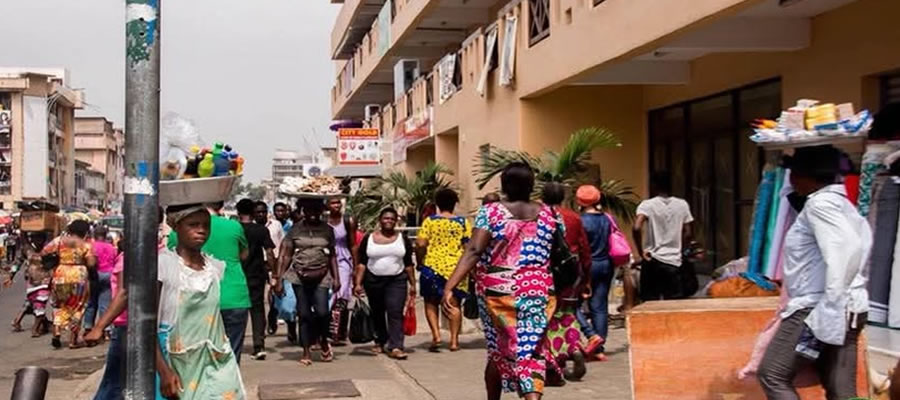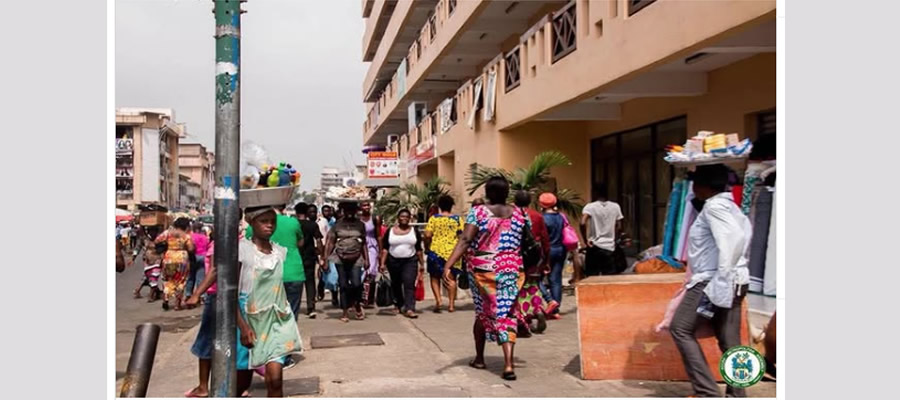

Introduction
The production of goods and services are meant for human consumption but human resource forms part of the factors of production. Information on the characteristics of the population as well as the proportion of economically active and economically not active persons in the total population can inform policies and programmes on economic activities, occupation, industry and employment. This chapter presents information on the activity status, size and structure of the labour force, and its distribution by occupation, industry, sector of employment and employment status in the Accra Metropolitan Area (AMA).
Economic Activity Status
Economically active are all persons (i) who worked for pay or profit or family gain during the seven days preceding the census or (ii) who did not work but had jobs to return to, such as those on leave with or without pay, temporarily ill persons, temporarily laid off persons or (iii) who did not work during the reference period, but were actively looking for work (i.e. the unemployed). On the other hand, economically not active are homemakers (persons who engaged in household duties without pay), students, the aged, pensioners and persons with disability (GSS, 2012).
This section presents results on persons 15 years and older who engaged in any activity for pay (cash or kind) or profit or family gain during the seven days preceding census night. Table 4.1 shows that out of the population 15 years and older in the Metropolis in 2010, 70.1 percent were economically active while 29.9 percent were economically not active.
Ninety-three percent of the economically active population were employed while 7.0 percent were unemployed. There were slightly more males (92.9%) than females (92.6%) employed in the Metropolis. Table 4.1 further reveals that more than half of the economically not active population were in full time education (52.0%) and the disabled or sick constituted the least percentage (3.1%). The large number of economically not active population who are in full time education means that the Metropolis has potential quality human capital for its socio-economic development in future.
Figure 4.1 displays population distribution of persons aged 15 years and older by economic status in the Metropolis. A little above 70 percent (70.1%) of the population 15 years and older were economically active and about 93.0 percent of that population was employed. In terms of sex, 69 percent of females aged 15 years and older were economically active and 93 percent of them were employed. About 72.0 percent of the males were economically active and 93 percent of them were employed. Also, the results show that about 30.0 percent were economically not active and 7.2 percent were unemployed. Unemployment is generally low in the Metropolis.
Information on population 15 years and older by sex, age and economic activity status is presented in Table 4.2. It reveals that employment status peaked (17.4%) for both sexes at age group 20-24, 65.1 percent of all age groups together were employed while 29.9 percent of all ages together were economically not active.
Higher proportions of both sexes aged between 20 and 29 years dominated the various employment statuses. More males (80.2%) aged between15 and 19 years than their female counterparts (75.9%) were economically not active. This might be due to the fact that more males than females of that age group were in full time education in the Metropolis.
Date Created : 4/24/2018 4:55:43 AM













 facebook
facebook
 twitter
twitter
 Youtube
Youtube
 +233 593 831 280
+233 593 831 280 0800 430 430
0800 430 430 GPS: GE-231-4383
GPS: GE-231-4383 info@ghanadistricts.com
info@ghanadistricts.com Box GP1044, Accra, Ghana
Box GP1044, Accra, Ghana